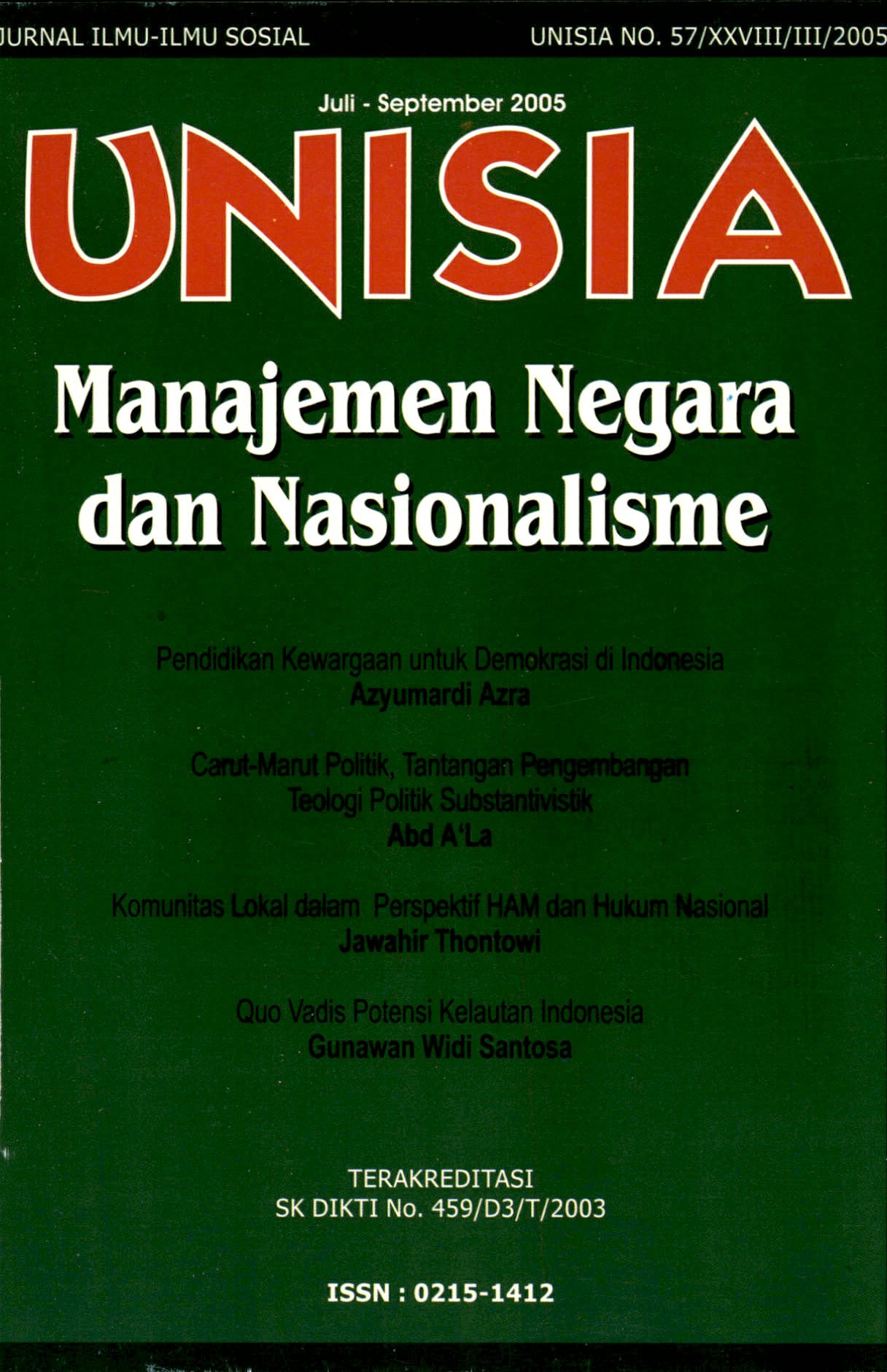Main Article Content
Abstract
There is no a specific term relating to the nation of a local community in Intemational Law. In term of practical meaning, however, the word of indigineous people in international convention obviously indicates to the existing of Indonesian societies, such as Badui, Dayak, Asmat, and Kubu. Inspite of the fact, that the local communities are not identical with legal concept of indigineous people in intemational convention, the 1945 constitution and the anuthonomy of iocal govemment Act No. 32/2005, recognize the term of traditional socities or local customary rules. These are relevant element of indigineous people, but they cannot directly be addressed to name local community. This is not because all local communities in Indonesia are applied modem type of governments, but also because traditional values partly operate in certain local commuriities. In order awamess of law and human rights, it is relevant to take into account local communities and its interest to accommodate into local law enacted by the local perliement.
Article Details
License
- Authors retain copyright and grant the journal right of first publication with the work simultaneously licensed under a Creative Commons Attribution License that allows others to share the work with an acknowledgement of the work's authorship and initial publication in this journal.
- Authors are able to enter into separate, additional contractual arrangements for the non-exclusive distribution of the journal's published version of the work (e.g., post it to an institutional repository or publish it in a book), with an acknowledgement of its initial publication in this journal.
- Authors are permitted and encouraged to post their work online (e.g., in institutional repositories or on their website) prior to and during the submission process, as it can lead to productive exchanges, as well as earlier and greater citation of published work.
How to Cite
Thontowi, J. (2016). Komunitas Lokal Perspektif HAM dan Hukum Nasional. Unisia, (57), 237–253. https://doi.org/10.20885/unisia.vol28.iss57.art3




